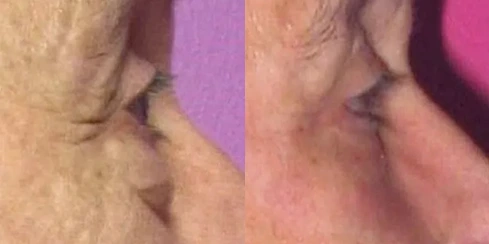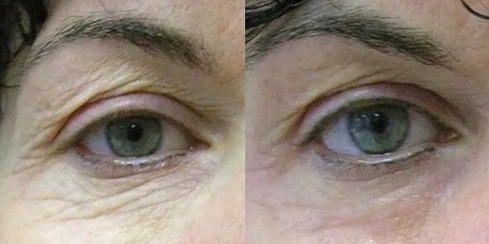Breast augmentation has evolved significantly over the years, offering patients a variety of options to achieve their desired aesthetic goals. For those seeking natural-looking enhancements with minimal disruption, the least invasive breast augmentation methods provide a compelling alternative to traditional surgeries. While implants remain a popular choice, advancements in fat transfer techniques and innovative surgical approaches have opened the door to less invasive solutions with reduced risks and quicker recoveries.
What Does “Least Invasive” Mean in Breast Augmentation?
In the context of breast augmentation, “least invasive” refers to procedures that achieve aesthetic goals while minimizing surgical trauma, recovery time, and potential risks. These techniques often involve smaller incisions, reduced scarring, and the use of natural materials like the patient’s own fat.
At Aesthetic Surgical Associates, Dr. Stephen Metzinger offers personalized breast enhancement options, including saline and silicone implants as well as fat transfer methods, all tailored to meet each patient’s unique goals.
Implant-Based Breast Augmentation: Minimizing Invasiveness
Implants remain a gold standard for breast augmentation, offering dramatic and customizable results. However, the invasiveness of the procedure can vary depending on several factors:
1. Implant Placement Options
- Subglandular Placement: Implants are positioned above the chest muscle and below the breast tissue. This approach avoids muscle disruption, resulting in shorter recovery times and less post-operative discomfort.
- Submuscular Placement: Implants are placed beneath the chest muscle, providing a more natural slope for certain body types. While this option may involve a longer recovery, it is less invasive when performed using advanced techniques.
2. Incision Techniques
- Inframammary Incision: Made under the breast fold, this incision offers direct access for implant placement with minimal visible scarring.
- Periareolar Incision: Made along the edge of the areola, this approach provides a discreet scar and is often chosen for smaller implants.
- Transaxillary Incision: Made in the armpit, this technique avoids scarring on the breast entirely but may require specialized expertise.
Each method is designed to balance aesthetic outcomes with patient comfort, making implant-based augmentation more adaptable and less invasive than ever before.
Fat Transfer: A Natural and Minimally Invasive Alternative
Fat transfer breast augmentation, also known as autologous fat grafting, is a minimally invasive procedure that uses the patient’s own fat to enhance breast volume and contour. This approach eliminates the need for foreign implants and significantly reduces surgical risks.
How Fat Transfer Works
- Fat is harvested from areas like the abdomen, thighs, or flanks using gentle liposuction techniques.
- The fat is purified and strategically injected into the breasts to achieve the desired shape and volume.
Benefits of Fat Transfer
- Natural-Looking Results: The use of your own fat creates a soft and organic feel.
- Dual Benefit: The procedure contours donor areas while enhancing the breasts.
- Minimal Scarring: Small incisions for liposuction and injection result in nearly invisible scars.
Fat transfer is ideal for patients seeking subtle enhancements and a more natural appearance without implants.
Implant vs. Fat Transfer: Which Is the Least Invasive?
When comparing implant-based augmentation to fat transfer, the level of invasiveness depends on your goals and body type. Here’s a breakdown:
Implants
- Procedure: Involves placing saline or silicone implants through a small incision, with options for placement above or below the chest muscle.
- Recovery: Typically takes 4-6 weeks, with some restrictions on physical activity.
- Scarring: Minimal scarring depending on incision location, such as inframammary, periareolar, or transaxillary.
- Risks: Includes capsular contracture, implant rupture, or displacement.
- Results: Offers dramatic, customizable volume and long-lasting outcomes.
Fat Transfer
- Procedure: Uses liposuction to harvest fat from donor areas, which is then purified and injected into the breasts.
- Recovery: Generally quicker, with most patients resuming normal activities within a few days to a week.
- Scarring: Minimal, with only small incisions for fat harvesting and injection.
- Risks: Includes fat reabsorption, requiring touch-ups for optimal results.
- Results: Provides natural-looking, subtle volume enhancement.
While implants may involve slightly more invasiveness due to the insertion of a foreign material, they offer more dramatic and predictable results. Fat transfer, on the other hand, is ideal for patients seeking a less invasive, natural alternative with dual benefits of body contouring and breast enhancement.
Dr. Stephen E. Metzinger
February 7, 2025
Conclusion
Breast augmentation does not have to involve extensive surgery to deliver beautiful results. Whether you opt for saline or silicone implants with strategic incision techniques or choose fat transfer for a natural and minimally invasive alternative, modern advancements ensure a solution tailored to your needs. The least invasive option ultimately depends on your goals, anatomy, and desired outcome.
At Aesthetic Surgical Associates, Dr. Stephen Metzinger is dedicated to helping patients explore these options with expert guidance and personalized care. With a focus on safety, natural results, and minimal recovery time, you can confidently achieve the enhancement you desire. Schedule a consultation today to begin your journey to a more confident you.







